Australian Tropical Rainforest Plants - Online edition
Neisosperma kilneri (F.Muell.) Fosberg & Sachet
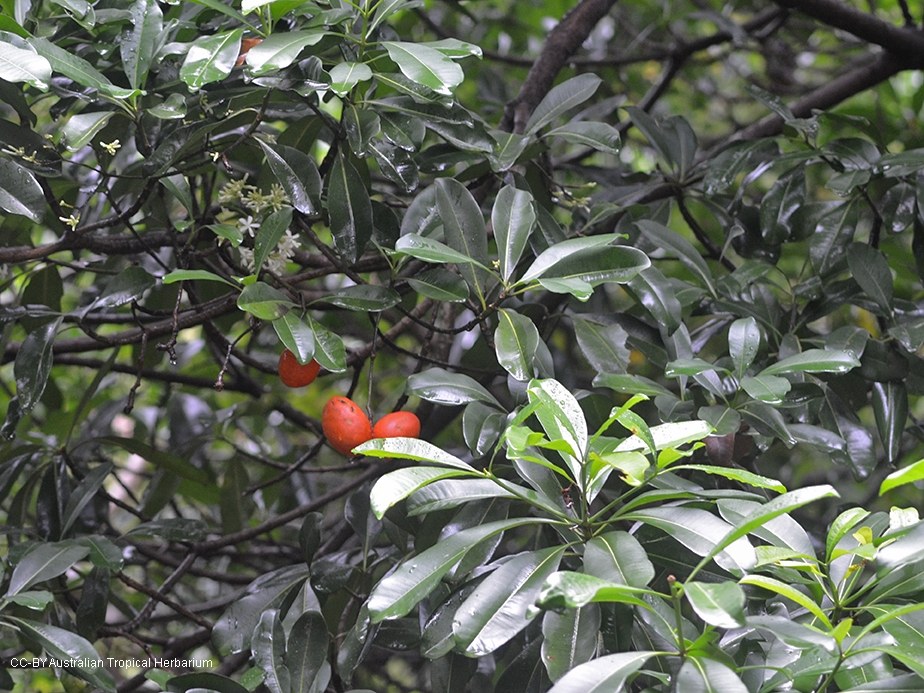


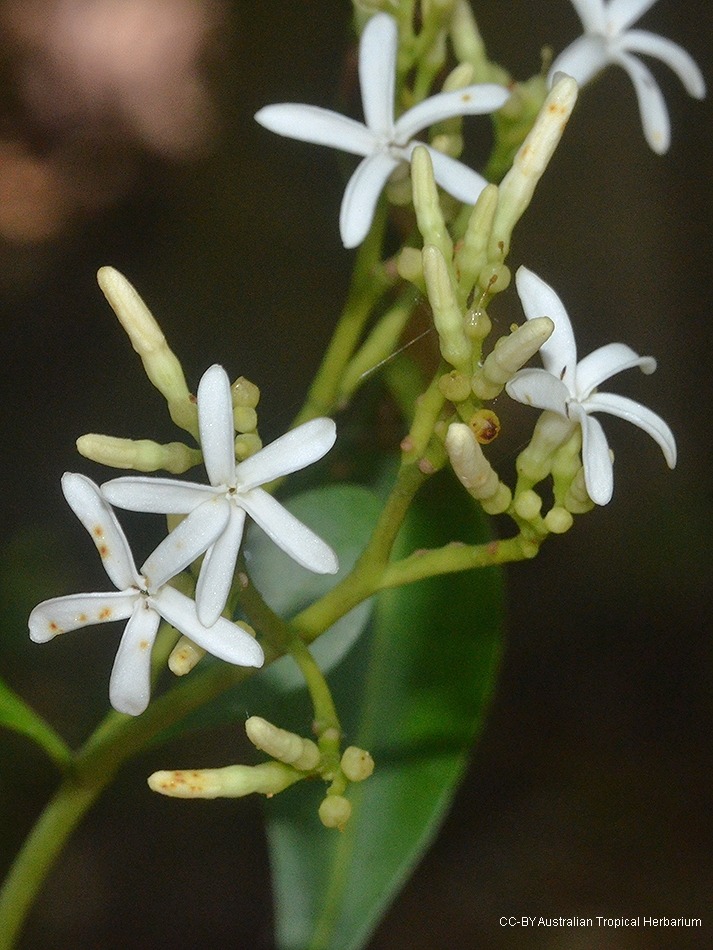
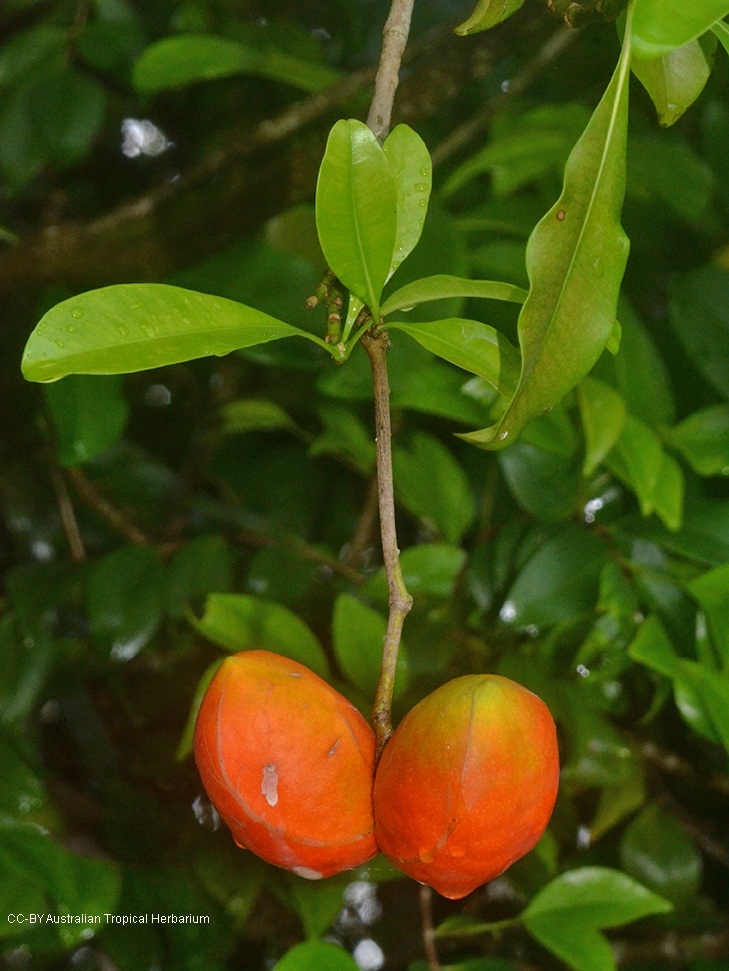



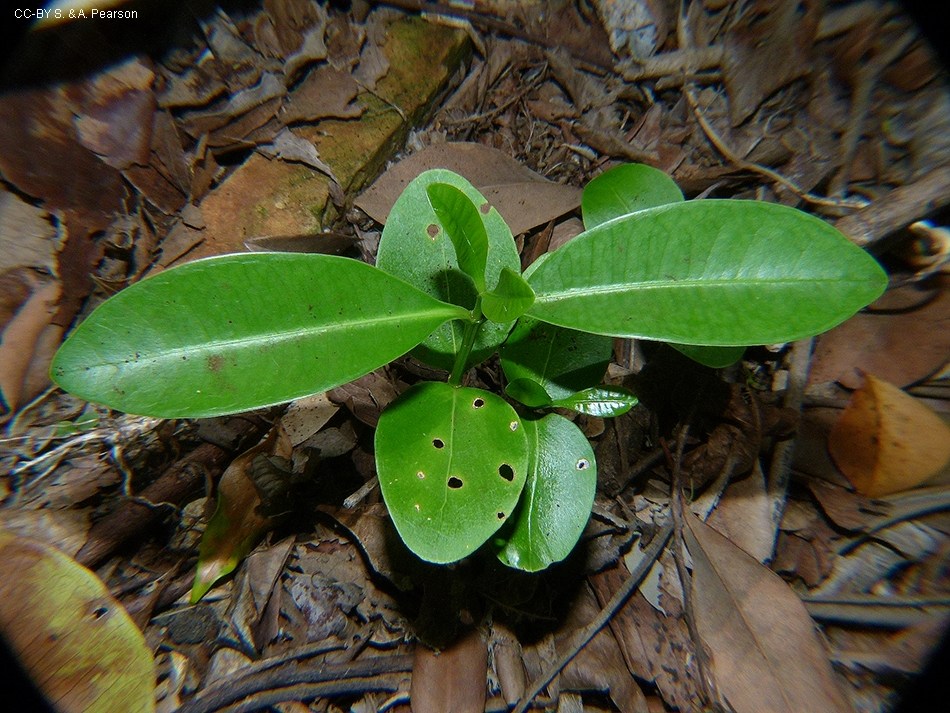
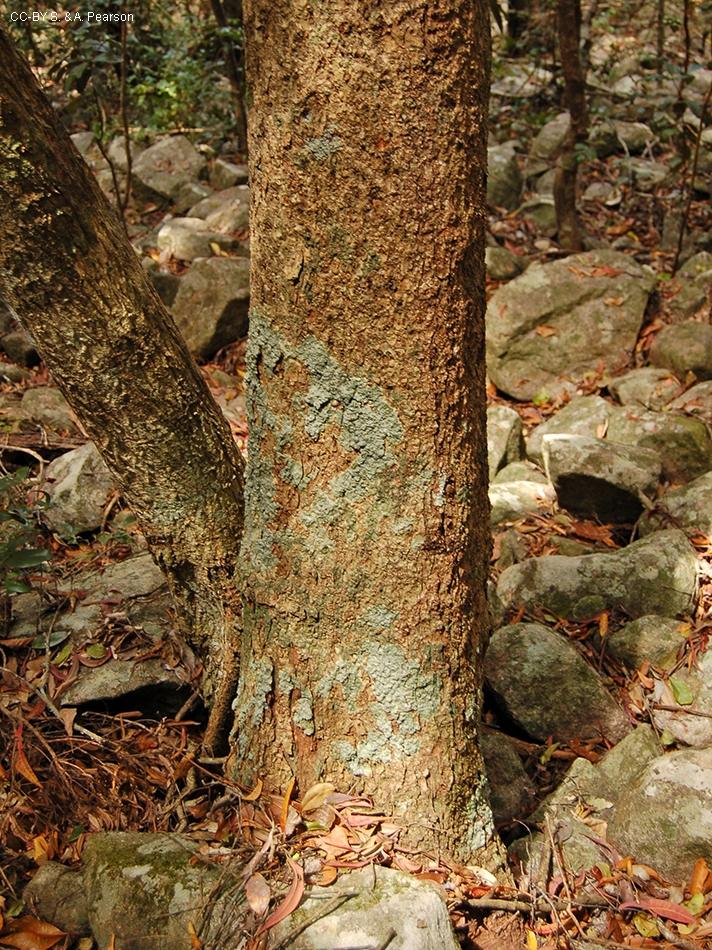
Fosberg, F.R., Boiteau, P. & Sachet, M.-H. (1977), Nomenclature of the Ochrosiinae (Apocynaceae): 2. Synonymy of Ochrosia Juss. and Neisosperma Raf. Adansonia 17(1): 29
Tree to 20 m, often flowers as a shrub. White exudate present.
Milky exudate present. Leaves arranged in whorls of 3 or 4. A bundle of colleters or mucilaginous hairs are present in each leaf axil. Leaves eventually caducous leaving a prominent leaf scar and colleters. Petiole to 1.5 cm long. Leaf blades to 14 cm long, to 6.5 cm wide, elliptic to obovate, apex obtuse, margin entire, base attenuate. Blade bronzed on underside or paler green. Blade colleters absent.
Inflorescence a panicle to 17 cm long, paired or in 3's at nodes. Flowers up to 15 mm diam, strongly scented, white. Pedicels 1-1.3 mm long. Calyx lobes triangular ovate 1-1.5 mm long. Corolla salveform with long tube and spreading lobes, tube 4-6 mm long, 1-2 mm wide, lobes turned towards right in bud up to 8 mm long, 2 mm wide. Stamens inserted 1.5-1.6 mm from top; anthers 1-1. mm long, c. 0.4 mm wide. Ovary of two separate carpels, superior; styles connate throughout; stigma cylindrical on a circular disc.
Fruit orange-red, apocarpous, with 2 mericarps, each mericarp ellipsoidal -ovoid (occasionally curved), 4.5-5.5 (7.5) cm long, 2.5-3.5 cm wide. Fruit fleshy, drupaceous, endocarp or stone entirely covered in irregular woody outgrowths flattened to run smoothly around surface and tapering to a tip, up to 3 mm thick, deeply fissured between outgrowths. Seed 1-4 per mericarp, flat, oblong.
Cotyledons ovate to elliptic, about 22-30 mm long, petiole short. First pair of leaves obovate, glabrous, margins smooth. At the tenth leaf stage: leaves obovate, apex obtuse, base attenuate, glabrous. Stems and leaves produce a milky exudate.
This species is easily distinguished from Neisosperma poweri by the woody and intricately patterned fibrous endocarp, by the well developed inflorescence extending beyond the foliage (5- 17 cm in N. kilneri and 2-4 cm in N. poweri) and the prominent secondary venation in the leaf blade.
Ochrosia kilneri F.Muell., Fragm. 7:129-130 (1871). Lactaria kilneri (F.Muell.) Kuntze, Revis. Gen. Pl. 415 (1891), Type: Mt Dryander, QLD, Apr. 1871, E. Fitzalan, s.n.; lecto: MEL. Ochrosia mcdowalliana F.M.Bailey, Bot. Bull. 7:65 (1893), Type: cultivated tree, Wickham Terrace Reserve, Brisbane, R. McDowall s.n., holo: BRI, iso: BRI.
1196





